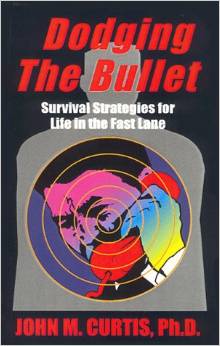LOS ANGELES.–Speaking today at Tehran’s Grand Mosalla mosque in Tehran, Iran’s Supreme Leader 85-year-old Ali Khamenei saved face with its humiliating losses to Hamas and its Hezbollah militia with Israel killing Hezbollah’s Supreme Leader Hassan Nasrallah Oct. 1 in Beirut. Khamenei retaliated Oct. 7 hitting Israel with 200 missiles, all intercepted by the U.S. Navy and Israel’s Iron Dome, causing little damage and no casualties in Israel. But what the public doesn’t get is Iran’s involvement in Palestinian resistance started in 1948 when Jews living in the Holy Land and Europe received the British Mandate of Palestine, making the new state of Israel the sovereign entity in Holy Land. Arabs lived in the Holy Land under Ottoman Turk and British control for over 500 years without rebellions, uprisings or war. Yet when Jews declared the state of Israel in 1948, the rebellions, uprisings and wars started.
So, why the Ayatollah’s fixation of destroying the state of Israel? Iran is a Shiite nation in a sea of Sunnis, including Palestinians, in the Middle East, looking for any common ground. What better common ground with Sunni Arabs that ani-Semitism, the hatred of Jews, largely because they were an integral part of Persian culture for hundreds, if not thousands, of years. Yet once the Ottoman Empire was broken up after WW I in 1920 at the Treaty of Sevres, the British were awarded the sovereign control of the Holy Land. Jordan was given control of East Jerusalem and the West Bank, Egypt sovereignty over the Sinai Peninsula and the Gaza Strip and Syria over the Golan Heights. Palestine Liberation Organization Founder Yasser Arafat founded the group in 1964 with the expressed purpose of destroying the Jewish State, reclaiming control over the Holy Land.
Arafat planned the 1967 Arab-Israel War, told by Egyptian President Gamal Abdel Nasser he would return the Holy Land to Arab control. When the war ended in six days, Israel defeated Egypt, Arafat’s Palestinians and five other Arab nations, in what’s now known as the Six Day War. Israel annexed Egypt’s Sinai Peninsula and Gaza Strip, Jordan’s East Jerusalem and West Bank and Syria’s Golan Heights. Israel gave back only the Sinai Peninsula to Egypt in exchange for a peace treaty in 1979, hosted by former President Jimmy Carter. To fuel the 1979 Islamic Revolution, Ayatollah Ruhollah Khomenei used Israel and anti-Semitism to fuel his Islamic Revolution getting rid of Shah Mohammed Reza Pahlavi. Once the revolution ousted the Shah, the destruction of Israel became an integral part of the Ayatollah’s agenda but only to dupe Sunni nations into common ground.
Persians have little or nothing in common with Sunni Arabs, other that sharing its remote connection of a different sect of Islam. Even to this day, the Grand Mufti of Saudi Arabia doesn’t consider Shiites as legitimate Muslims, calling them apostates. But to Ayatollah Ali Khamenei, anti-Zionism or Arab resistance is the only thing the Islamic Republic of Iran has in common with Sunni Arabs. “The resistance in the region will not back down with these martyrdoms, and will win,” Khamenei said, trying to save face after taking a beating recently at the hands of Israeli Prime Minister Benjamin Netanyahu. Ayatollah Khamenei told his flock Iran won’t “procrastinate or rush to carry out its duty” in confronting Israel, even though Persians have no cultural or genetic ties to Sunni Arabs. Ayatollah would like to take over control over the Holy Land if given the chance.
Palestinians, as Arafat called Arabs in the Holy Land, would not tolerate Persian control over the Holy Land and the Ayatollah knows it. Only thing Sunni Arabs have in common with Persians is anti-Semitism, something ironic because Jews live for hundreds, if not thousands, of years in Persia until the mass exodus in 1979 Islamic Revolution. Jews still live without harassment in Iran, despite the Ayatollah fake rhetoric about backing the “resistance.” What the Ayatollah really backs are terrorist groups that can attack the United States main ally in the Middle East, Israel. With the Ayatollah’s last throwaway missile attack on Israel, U.S. Sen. Lindsey Graham (R-S.C.) called on the U.S. and Israel to strike Iran’s oil infrastructure. Netanyahu must decide whether he has enough fish to fry in Gaza and Beirut to play around with striking Iran for pure retaliation.
Khamenei spoke to the flock to let them know that Iran is a big and powerful nation capable of standing up to the United States and Israel. But any outside military expert knows Iran’s vulnerabilities, especially with its oil infrastructure. Khamenei hasn’t spoken at the Grand Mosalla mosque since former President Donald Trump ordered the Jan. 3, 2020 assassination of Qasem Soleimani. “The ayatollah needs to show a small but radical Islamist constituency that he’s not hiding in a bunker” and “fool the outside world by making it believe he’s popular at home,” said Kasra Aarabi, director of IRGC research at United Against Nuclear Iran. Everything for Khamenei is saving face, letting his state-sponsored terror groups know he’s still in charge. Since Ayatollah can’t conquer the Holy Land like the Ottomans, he must do the next best thing funding Sunni and Shiite terror groups.
About the Author
John M. Curtis writes politically neutral commentary analyzing spin in national and global news. He’s editor of OnlineColumnist.com and author of Dodging The Bullet and Operation Charisma.



